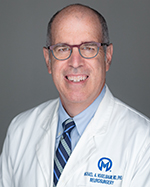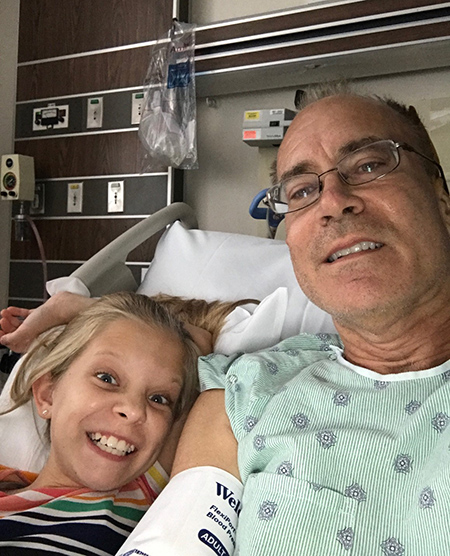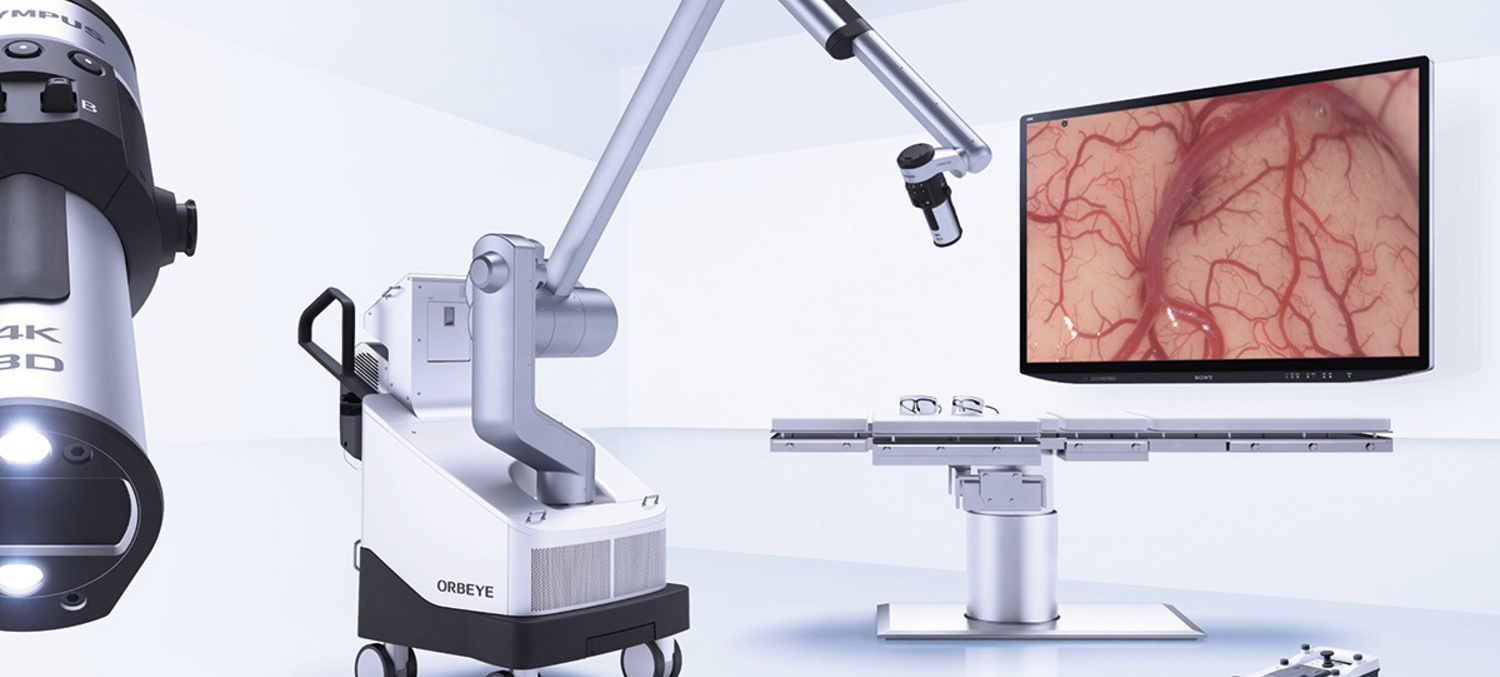4K 3D Tech Takes on Brain Cancer in the O.R.
When Dr. David Pearse learned that he had glioblastoma, the most aggressive form of cancer in the brain, he knew where he wanted to go for help. He wanted to see Dr. Michael Vogelbaum at Moffitt Cancer Center.

Dr. Michael Vogelbaum, Chief of Neurosurgery and Program Leader of Neuro-Oncology at Moffitt Cancer Center
Vogelbaum, Moffitt’s Chief of Neurosurgery and Program Leader of Neuro-Oncology, had access to technology that could potentially extend the Melbourne, Fla., radiologist’s life. A novel 3D surgical exoscope called the Orbeye is used with a dye called 5-Aminolevulinic Acid, or 5-ALA. Viewed through the scope under blue light, the dye makes cancer cells shine a fluorescent red.
The new 3D visualization technology meant that Vogelbaum could more easily see where Pearse’s tumor lived and where the healthy brain tissue began. That advantage meant Moffitt had the best chance of completely removing the tumor growing in Pearse’s brain without hurting normally functioning areas.
“We are the only center in North America equipped with a 3D exoscope that can be used with 5-ALA, and this unique technology gives us a view unlike any other,” Vogelbaum said, explaining that Moffitt is conducting a validation study with the equipment. “This type of microscope uses a digital camera like those used for high definition broadcasting of sporting events. It’s highly light sensitive and that allows us to see both normal brain tissue and fluorescing tumor in real time.”
Vogelbaum said the surgery was a success and that Pearse’s tumor was removed. He’s come a long way since his first symptoms appeared Oct. 13.
“I was working at a computer when I got confused,” Pearse said of his early symptoms. “I couldn’t log off and had difficulty recognizing words. I thought I was having a stroke, so I asked for help.”
Colleagues immediately took Pearse to the emergency room next door, where he underwent tests for stroke victims while awaiting the results of scans. Soon, the doctor had the results.
“The doctor came in and said, ‘I have good news, there is no stroke,’” Pearse recalled. “’But there is bad news, you have an enhancing mass.’”
Pearse has looked at images like the one of his brain for nearly 40 years. He said he immediately knew his own diagnosis – glioblastoma, the most aggressive form of cancer in the brain. A biopsy the next day confirmed that the mass in the front part of the brain that controls speech production and language comprehension was cancer.
While the news surprised Pearse, of course, he knew there were next steps to take.
“I’m a doctor, so I started a plan,” he said.
Pearse had heard of Vogelbaum through his colleagues. Two weeks after his diagnosis, he was on Vogelbaum’s operating table in Tampa. Vogelbaum said the operation was a success and the tumor was successfully removed.
Unfortunately, however, glioblastomas are never truly gone.
“In a glioblastoma you have two parts to the disease,” Vogelbaum explained. “There is the solid part which lights up with contrast and that’s what we typically remove. Then there is the infiltrating part that co-exists with normal, functioning brain tissue. There is no safe way to remove all of that part of the disease while keeping the brain intact.”
Someday, clinical trials may find a solution to effectively treat the infiltrating cancer. But for now, patients with a glioblastoma diagnosis typically survive an average of 18 months after diagnosis.
While the 5-ALA and Orbeye technology wasn’t a cure, it was a way to improve the quality of the life Pearse has left.

David Pearse with his daughter.
“My family tells me that maybe this was a blessing in disguise because otherwise I would have just kept on working until I was 75,” said Pearse, who is still undergoing chemotherapy and radiation treatments near his home. “Now I’m looking forward to traveling and seeing the things I’ve always wanted to see.”
On the docket so far are Rome, Pompeii, Egypt and the Isle of Capri. Pearse is especially excited about Rome and Egypt because he is a self-described history nut. He says he is definitely healthy enough to travel.
“Since my surgery, I’d say I’m about 90-95% back to myself,” Pearse said. “I do get hung up on words occasionally where I just can’t find them. But unless you know what I’ve been through, I don’t think it’s very noticeable.”
Pearse said he hopes that new clinical trials in the not-too-distant future will offer him more options for a longer life. In the meantime, he’s planning his travel and spending time with his family.
“They are all engineers, so they intellectualize this,” Pearse laughed. “I’m fortunate to have them around.”



